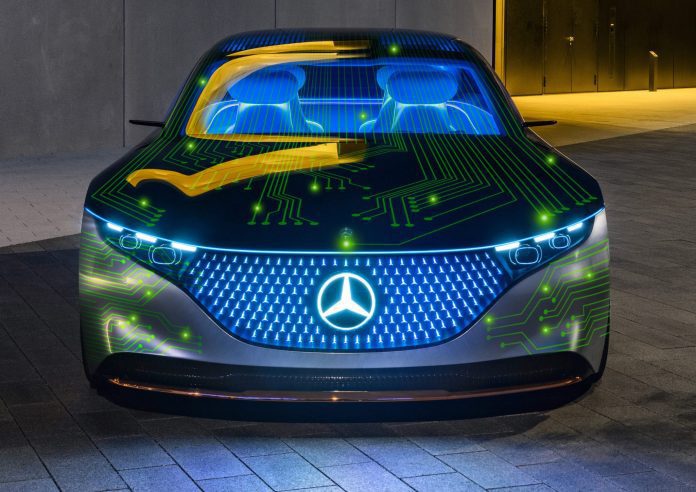Mercedes-Benz and NVIDIA have plans to jointly develop an in-vehicle computing system and AI computing infrastructure to be rolled out across the fleet of next-generation Mercedes-Benz in 2024.
NVIDIA’s software-defined architecture, built on the company’s DRIVE platform, will become a standard feature in the automotive manufacturer’s line-up, with the primary featuring being the ability to automate driving of regular routes from address to address. NIVIDIA’s DRIVE system contains the computer system-on-a-chip NVIDIA Orin, which is based on the recently announced NVIDIA Ampere supercomputing architecture.
There will be also be a number of safety and convenience applications, and through over-the-air software updates, customers will be able to purchase and add capabilities, software applications and subscription services.
”Together, we’re going to revolutionize the car ownership experience, making the vehicle software programmable and continuously upgradeable via over-the-air updates,” said Jensen Huang, founder and CEO of NVIDIA. “Every future Mercedes-Benz with the NVIDIA DRIVE system will come with a team of expert AI and software engineers continuously developing, refining and enhancing the car over its lifetime.”
Ola Källenius, chairman of the board of management of Daimler AG and head of Mercedes-Benz AG, further commented that NVIDIA’s AI computing architecture will allow the company to “streamline [its] journey towards autonomous driving.”
“This new platform will become an efficient, centralized and software-defined system in our future Mercedes-Benz vehicles,” he said. “These new capabilities and upgrades will be downloaded from the cloud, improving safety, increasing value and extending the joy of ownership for all Mercedes-Benz customers.”
While the partnership will utilize the NVIDIA DRIVE platform, both companies have committed to jointly develop the AI and automated vehicle applications that include the Society of Automotive Engineers (SAE) level 2 and 3, as well as automated parking functions, which is considered level 4.
For reference, when it comes to automated driving, there are six levels: Level 1, or the “hands on” level, is when the driver shares control with the automated system; level 2, also known as “hands off,” is when the automated system has full control of the vehicle when it comes to accelerating, braking, and steering, but the driver must monitor the driving and be prepared to intervene if necessary; level 3 of “eyes off” allows the driver to take so little control that they might even be able to text or watch an internet video; level 4 or “mind off” takes self-driving so far that the driver can even go to sleep while the vehicle is in motion. Levels 5, and clearly the one that the industry is farthest from achieving, is considered the fully automated level, in which the driver simply has to start the vehicle.
“This is the biggest partnership of its kind in the transportation industry,” Huang said. “We’re breaking ground on several different fronts, from technology to business models, and I can’t imagine a better company to do this with than Mercedes-Benz.”

